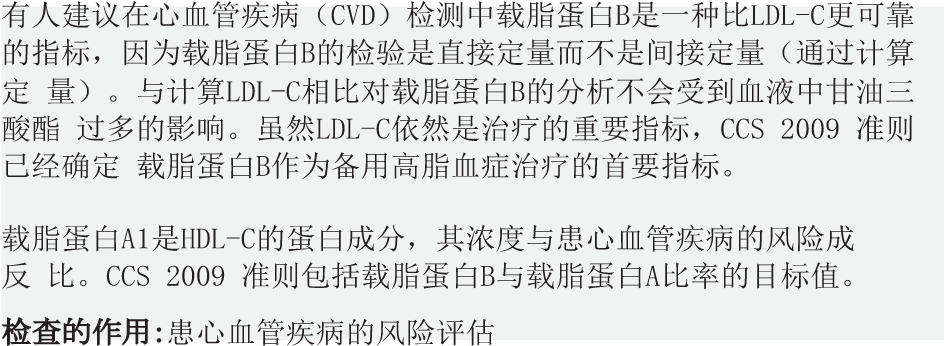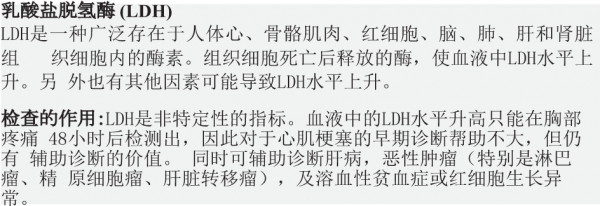Glucose
Glucose is formed from carbohydrate digestion and conversion of glycogen to glucose by the liver. Abnormal glucose metabolism may be caused by inability of pancreas to produce insulin, reduced numbers of insulin receptors, faulty intestinal glucose absorption, inability of the liver to metabolize glycogen or altered levels of hormones that play a role in glucose metabolism.
Use of Test:
Detection of hyperglycaemia and hypoglycaemia. A screening test for diabetes mellitus, except in pregnancy where glucose must be measured following a glucose load. Monitoring
glycaemic control.

Sodium
Electrolytes in the body include sodium, potassium, calcium, magnesium, chloride, phosphate, bicarbonate and sulphate. The main functions of sodium are to clinically maintain osmotic pressure, acid-base balance, and to transmit nerve impulses. Sodium concentration is dependent on state of hydration, body sodium content and water shifts between plasma and other body fluid compartments.
Use of Test:
Assessment and monitoring of fluid and electrolyte status especially in patients with renal or cardiac disease, possible sodium losing states and in those receiving intravenous fluids.

Potassium
Potassium is the principal intracellular electrolyte (cation). It plays an important role in acid-base balance, osmotic pressure, nerve
conduction and muscle function. Decreased blood potassium levels occur with shifting of potassium into cells, potassium loss from
gastrointestinal and biliary tracts, renal potassium excretions and reduced potassium intake. Increased potassium levels are associated
with potassium shifts from cells, with inadequate renal excretion and excessive potassium intake.
Use of Test:
Monitoring potassium status in patients with renal disease, acid-base disturbances, severe fluid and electrolyte loss, on diuretic treatment or intravenous therapy. Investigation of
mineralocorticoid status.

Chloride
Chloride is the most abundant extracellular anion. It exists in the extracellular space as a combination in sodium chloride or hypochloric acid. Chloride maintains cellular integrity through its influence on osmotic pressure and acid-base and water balance. In general, chloride is affected by the same conditions that affect sodium.
Use of Test:
Assessing the possible cause of acid-base disturbances, including calculation of the anionic gap. An increased anionic gap indicates accumulation of an anion other than chloride such as lactate, hydroxybutyrate.

Urea
Urea is produced in the liver and excreted by the kidneys. Along with CO2 it constitutes the final product of protein metabolism. The amount of excreted urea varies directly with the dietary protein intake, with increased excretion in fever, diabetes and increased adrenal gland activity. The test is used as a gross index of glomerular function and the production and excretion of urea. Rapid protein catabolism and impairment of kidney function will result in an elevated level.
Use of Test:
Investigation of renal function.

Creatinine
Creatinine is an end-product of nitrogen metabolism. It is derived from creatine, most of which is present in muscle. Serum creatinine levels are dependent on body muscle mass and creatinine is removed from the body by the kidneys. A disorder of kidney function reduces excretion of creatinine with resultant elevated blood levels. Levels may be increased by up to 50% in normal individuals after a large meat meal.
Use of Test:
Detection of decreased glomerular filtration.

Calcium
Calcium is present in plasma in three forms, ionised, complexed and protein bound. Only ionised calcium can be used by the body in vital processes like muscular contraction, cardiac function, transmission of nerve impulses and blood clotting. About 98-99% of the body’s calcium is present in the skeleton and teeth. This test measures the concentration of total and ionised calcium in the blood to reflect parathyroid function, calcium metabolism and malignant activity.
Use of Test:
Diagnosis of hypercalcaemia and hypocalcaemia.

Phosphate
Most of the phosphorus in the blood exists as phosphates or esters. Phosphate is required for generation of body tissues and functions in the metabolism of glucose and lipids, in the maintenance of acid-base balance, and in the storage and transfer of energy from one site in the body to another. Increased phosphate levels are most commonly found in response to low parathyroid hormone levels and in renal failure.
Decreased levels occur in primary hyperparathyroidism and other conditions.
Use of Test:
Evaluation of patients with renal failure, hyperparathyroidism, hypoparathyroidism, metabolic bone disease.

Uric Acid
Uric acid and its salts are end-products of purine metabolism. The uric acid level in the blood is a balance between its synthesis and elimination. Gout is most often associated with a raised blood uric acid level. However, asymptomatic hyperuricaemia can occur, and a variety of conditions can also raise the blood level (eg increased tissue breakdown, medications such as thiazides and barbiturates, alcohol consumption, renal failure, sarcoidosis, etc).
Use of Test:
Diagnosis and monitoring treatment of gout.

Rheumatoid Factor
The blood of many people with rheumatoid arthritis contain rheumatoid factors which are antigammaglobulin antibodies. RF is sometimes found in blood serum from patients with other diseases, even though RF incidence and values are higher in patients with rheumatoid arthritis.
Use of Test:
Diagnosis and prognosis of rheumatoid arthritis. Also positive in other chronic inflammatory conditions and immune complex diseases.

C-Reactive Protein (CRP)
CRP is a special protein that appears rapidly in the blood and body fluids during any inflammatory process. Blood serum CRP can be detected within 18 to 24 hours after the onset of tissue damage. Elevation indicates acute phase response or acute phase disease in chronic inflammatory disorders.
Use of Test:
Assessment of acute phase reaction in inflammatory, infective and neoplastic disorders; monitoring disease activity, especially in inflammatory arthritis.

Total Cholesterol
Lipids are fatty substances made up of cholesterol, cholesterol esters, triglycerides, nonesterized fatty acids and phospholipids. Majority of endogenous cholesterol is produced by the liver. Exogenous dietary sources include animal fats and oils. A diet high in fat, especially saturated fat, tends to raise blood cholesterol levels. High cholesterol levels in the blood encourage deposition of fat substances on blood vessel walls with potential risk for atherosclerosis especially atherosclerotic coronary artery disease. Total serum cholesterol comprises all of the cholesterol found in various lipoproteins.
Use of Test: Evaluation of lipid status especially as a risk factor for coronary artery disease. It should be performed with HDL and triglyceride tests to assess atherosclerotic risk factors.

High-Density Lipoprotein Cholesterol (HDL)
Cholesterol and its esters, triglycerides and phospholipids are all transported in the bloodstream attached to protein particles. These lipid-protein complexes are known as lipoproteins. HDL or “good cholesterol” protect against atherosclerosis by removing cholesterol and excess fat from blood vessel walls and transport them to the liver where they are removed from the body.
Use of Test: Assessment of risk for atherosclerosis, especially coronary artery disease. Investigation of lipid status in suspected hyperlipidaemia.

Low-Density Lipoprotein Cholesterol (LDL)
Most serum cholesterol is present in the LDL. LDL or “bad cholesterol” transports fat and cholesterol to various parts of the body including the blood vessels. They are closely associated with increased incidence of athero-sclerosis and coronary heart disease. LDL cholesterol levels are calculated from fasting values of total cholesterol, HDL cholesterol and triglycerides.
Use of Test: Assessment of risk for atherosclerosis, especially coronary artery disease. Investigation of lipid status in suspected hyperlipidaemia.

Cholesterol Ratio
The cholesterol/HDL ratio gives more information than does either value alone. The higher the ratio, the higher the risk for developing atherosclerosis.
Use of Test: Assessment of risk for atherosclerosis, especially coronary artery disease.

Triglycerides
Triglycerides form the main lipid component of the diet. Exogenous triglycerides are transported to the systemic circulation via the thoracic duct. The liver is the major site of endogenous triglyceride synthesis, from fatty acids and glycerol. Triglycerides comprise 95% of fat stored in tissues. Storage triglycerides can be broken down to provide energy for the body.
Use of Test: Evaluation of lipid status.

It has been suggested that Apo B is a more reliable indicator of Cardiovascular disease (CVD) than LDL-C, since measurement of Apo B is a direct quantitation rather than a calculated measurement. Apo Bassay is also not affected by hypertriglyceridemia as is the case with the calculated LDL-C. While LDL-C continues to constitute the primary target of therapy, the Canadian Cardiovascular Society (CCS) 2009 guideline has identified Apo B as an alternate primary target of hyperlipidemia therapy.
Apo A1 is the protein component of HDL-C and its concentration is inversely related to risk of CVD. The CCS 2009 guideline includes target values for the ratio of Apo B/Apo A.
Use of Test: Assessment of Cardiovascular Disease Risk.

Total Protein
Serum protein is comprised of albuminS and globulin, either bound or act- ing as carrier proteins. Plasma proteins are mostly synthesized in the liver, except for immunoglobulins, which are synthesized in the lymphoreticular system. They are a source of nutrition and a buffer system. Increased levels of total serum protein occur in conditions like dehydration, haemoconcentration states due to fluid loss. Decreased levels are associated with insufficient nutritional intake, severe liver disease, renal disease and other conditions.
Use of Test: Diagnosis and monitoring of hypergammaglobulinaemia and hypogammaglobulinaemia, protein losing states and malnutrition. Used in conjunction with albumin to calculate globulin.

Albumin
Most serum albumin is produced by the liver. It contributes towards maintaining the colloid oncotic pressure of plasma. Albumin also acts as a transport protein for some drugs and substances such as fatty acids, calcium, unconjugated bilirubin, thyroxine and urate. Increased levels may be seen with dehydration. Decreased levels may be associated with conditions such as overhydration, chronic liver disease and protein losing disorders.
Use of Test: Evaluation of nutritional status, protein losing disorders, liver disease, dehydration.

Bilirubin (Total)
Bilirubin is formed from the breakdown of haemoglobin in red blood cells by reticuloendothelial cells mainly in the spleen, liver and bone marrow. Total bilirubin comprises unconjugated, conjugated and delta bilirubins. Bilirubin is removed from the body by the liver, which excretes it into the bile. Elevated serum levels occur if the liver is unable to excrete the normal amount of bilirubin produced or if there is an excessive destruction of red blood cells. Jaundice, a condition with visible yellow colouration of the skin, sclera and mucous membrane is characterised by high levels of bilirubin in the blood.
Use of Test: Investigation and monitoring of hepatobiliary disease and haemolysis.

检查的作用:肝胆疾病和溶血现象的检查与诊断。
Alkaline Phosphatase (ALP)
Alkaline phosphatase is a group of closely related enzymes found in many tissues, with highest concentrations in liver and biliary tract epithelium, bone, intestinal mucosa and placenta. ALP activity is increased in many conditions, the two principal categories being liver and bone diseases.
Use of Test: Investigation of hepatobiliary or bone disease.

Aspartate Aminotransferase (AST/SGOT)
AST is an enzyme found in several organs and tissues, including liver, heart, skeletal muscle, kidney, brain, pancreas, spleen, and lungs. The enzyme is released into the circulation following the injury or death of cells. Increased levels are found with hepatocellular disease, as well as cardiac and skeletal muscle diseases.
Use of Test: Detection and monitoring of liver cell damage.

Alanine Aminotransferase (ALT/SGPT)
ALT is an enzyme found predominantly in liver but with lower concentrations in the kidney, heart and skeletal muscle. In general, most ALT elevations are due to liver disease. ALT is more specific for hepatocellular damage than AST.
Use of Test: Detection and monitoring of liver cell damage.

Gamma Glutamyltransferase (GGT)
GGT is an enzyme located mainly in the liver, kidney, biliary tract epithelium, intestine, heart, brain, pancreas and spleen. GGT is affected by both acute liver damage and biliary tract obstruction. The test is used to determine liver cell dysfunction and to detect alcohol-induced liver disease. Pancreatitis and prostatitis may also be associated with in- creased levels.
Use of test: Evaluation of liver disease.

Lactate Dehydrogenase (LDH)
LDH is an intracellular enzyme found in heart, skeletal muscle, red blood cells, brain, lung, liver and kidney. Increases in value usually indicate cellular death and leakage of the enzyme from cells. A considerable number of conditions can elevate LDH level.
Use of Test: A non-specific indicator of disease. Of limited value in supporting the diagnosis of myocardial infarction when testing is performed >48 hours after the onset of chest pain. Maybe useful occasionally in the assessment of patients with liver disease or malignancy (especially lymphoma, seminoma, hepatic metastases); anaemia when haemolysis or ineffective erythropoeisis is suspected.

Thyroxine (Free T4)
Free T4 is the metabolically active form of thyroxine. This test determines thyroid status, rules out hypothyroidism and hyperthyroidism and evaluates thyroid replacement therapy.
Use of Test: Investigation of thyroid function, as an adjunct to TSH which is the preferred test for assessment of thyroid status. Monitoring patients on thyroid replacement therapy.

Thyroid Stimulating Hormone (TSH)
Hormone synthesis in the thyroid is controlled predominantly by plasma thyroid-stimulating hormone from the anterior pituitary gland. TSH output is regulated by the negative feedback effects of free T3 and free T4 acting on both the hypothalamus and the pituitary. TSH is more sensitive than free T4 to alterations of thyroid status in patients with primary thyroid disease. High levels are found in primary hypothyroidism.
Use of Test: It is the preferred initial test for assessment of thyroid function. Monitoring of patients on thyroid replacement or suppressive therapy.

Alpha Fetoprotein (AFP)
Alpha fetoprotein is present in the tissues and plasma of the foetus. Its concentration falls rapidly after birth but minute amounts can still be detected in plasma from adults. Pregnant women have raised levels of plasma AFP. Great increases in AFP occur in patients with hepatocellular carcinoma. Increases in plasma AFP in association with other malignant tumours such as gonadal, gastric, pancreatic and biliary tract neoplasms can also be detected. Lesser elevations may be found in non-neoplastic disease associated with liver cell regeneration.
Use of Test: Detection and monitoring of hepatocellular carcinoma and germ cell tumours, particularly for recurrence after treatment.

CA 125
CA 125 is a glycoprotein. It is a marker for serious carcinoma especially carcinoma of the ovary, but elevations are also seen in peritoneal disease of any cause.
Use of Test: The test should not be used as either screening or diagnostic test for malignancy. It may be used for monitoring effectiveness of therapy in patients with a malignancy that has been shown to produce this marker.

CA 19-9
CA 19-9 is a marker for gastrointestinal malignancy, especially carcinoma of the pancreas.
Use of Test: The test should not be used as either screening or diagnostic test for malignancy. It may be used for monitoring effectiveness of therapy in patients with a malignancy that has been shown to produce this marker.

Carcinoembryonic Antigen (CEA)
Slight increases may be seen in smokers and in patients with inflammatory bowel disease. It may be increased in patients with other carcinomas (lung, liver, pancreas). Increasing levels in patients with a history of colorectal or breast adenocarcinoma suggests local recurrence or metastatic disease.
Use of Test: Not sufficiently sensitive or specific to be used as a screening test for malignant disease. Can be used to detect recurrence of colonic adenocarcinoma and breast carcinoma following resection.

Prostate Specific Antigen (PSA)
Prostate specific antigen is localized in both normal prostatic epithelial cells and prostatic carcinoma cells. Serum PSA is markedly elevated in prostatic carcinoma. However increased levels are also seen in benign prostatic hypertrophy, prostatitis, prostatic ischemia and/or infarction and acute renal failure. Normal levels do not exclude prostatic carcinoma.
Use of Test: Diagnosis and monitoring the course of prostatic carcinoma. It is not recommended as a screening test for carcinoma of the prostate.

EBV EA+EBNA-1 IgA
Epstein-Barr virus (EBV), a human herpes virus, is a major aetiologic factor in a number of human diseases, including infectious mononucleosis, Burkitt’s lymphoma and nasopharyngeal carcinoma.
Nasopharyngeal carcinoma (NPC) is a malignant tumor which occurs among the Chinese living in this region. Its poor prognosis is due to the late stage at which the disease is detected. Therefore, early diagnosis is important.
Studies show that sera from NPC patients have high titers of EBV specific antibodies. Recently an ELISA method has been developed to detect the presence of IgA antibodies to the EB early antigen (EA) and the EB nuclear antigen-1 (EBNA-1).

SYPHILIS AB SCREENING
Syphilis is a venereal disease caused by Treponema pallidum. VDRL or RPR are nontreponemal (nonspecific) tests used as screening tests for syphilis while the Syphilis TP assay is a qualitative detection of antibody to T. pallidum in human serum or plasma (treponemal specific) . They are also used for monitoring treatment. They may show negative results in some cases of late syphilis. False positive results can occur in nonsyphilitic conditions such as malaria, leprosy, viral infections,
bacterial infections, rheumatoid arthritis, pregnancy and others. Diagnosis of syphilis must be confirmed by Confirmatory Test for specific antibody to T. pallidum.
Use of Test: Screening test for syphilis. Non-specific cardiolipin antibody test. Can be used for monitoring treatment of syphilis. Confirmatory test for specific antibody to T. pallidum is required.

Treponema Pallidum Haemagglutination (TPHA)
TPHA is a treponema (specific) test that detects antibodies to T.pallidum. Positive results confirm the diagnosis of syphilis but do not indicate whether the disease is active, inactive or cured. The titre may not fall after effective treatment except in early syphilis.
Use of Test: Confirmatory test for syphilis.

Blood
Blood consists of several different types of cells suspended in plasma. The function of blood is to provide oxygen to the tissues, to prevent invasion by microorganisms and to promote haemostasis. The formed elements of the blood or blood cells consist of the red cells (erythrocytes), the white cells and the platelets. The cells are produced primarily by bone marrow. Plasma fluid derives from the intestines and organs and provides vehicle for cell measurement.

Haemoglobin (Hb)
Haemoglobin is the oxygen-carrying component contained in red blood cells (RBCs). It is composed of a single protein called globin and a compound called haem, which contains iron atoms and the red pigment porphyrin. The oxygen-combining capacity of the blood is directly proportional to the haemoglobin concentration, rather than to the number of RBC. Haemoglobin determination is part of a complete blood count that screens for disease associated with anaemia, determines the severity of anaemia, follows the response to treatment for anaemia and evaluates polycythemia. Anaemia is defined as Hb below normal for age and gender.
Use of Test: Suspected anaemia or erythrocytosis.

Red Blood Cell (RBC) Count
Red blood cells contain haemoglobin and a variety of other proteins, salts, and vitamins. The cells are shaped like biconcave discs to enable the maximum amount of haemoglobin to be used. The primary functions of RBCs are to transport oxygen from the lungs to the body tissue and to carry carbon dioxide from the tissues to the lungs. RBC count determines the total number of red blood cells found in a cubic millimeter (mm3) of blood. It is an important measurement in the determination of anaemia or polycythemia.
Use of Test: Investigation of anaemia or erythrocytosis.

Haematocrit (Hct), (PCV)
Haematocrit determines red blood cell mass. The results are expressed as the percentage of packed red cells in a volume of whole blood. It is part of the complete blood count.
Use of Test: Assessment of anaemia and erythrocytosis. Monitor haemodilution, haemoconcentration.

Mean Cell Volume (MCV)
The mean cell volume gives an indication of the size of RBCs. This index expresses the volume occupied by a single RBC and is a measure in cubic microns (um3) of the mean volume. It is useful for classifying anaemias.
Use of Test: Guide to investigation of anaemia; blood film should also be requested.

Mean cell Haemoglobin (MCH)
MCH gives an indication of the amount of haemoglobin per RBC. It is expressed in picograms. An increase of MCH is associated with macrocytic anaemia and a decrease of MCH is associated with microcytic anaemia.
Use of Test: Guide to investigations of anaemia; blood film should also be requested.

Mean Cell Haemoglobin Concentration (MCHC)
This test measures the average concentration of haemoglobin in the average RBC. It gives the ratio of the weight of haemoglobin to the volume of the red blood cell.
Use of Test: Guide to investigation of anaemia; blood film should also be requested.

White Blood Cell Count (WBC)
White blood cells or leucocytes fight infection and defend the body by phagocytosis, a process in which the leucocytes encapsulate foreign organisms. They also produce, transport and distribute antibodies as part of the immune response. White blood cells can be differentiated into neutrophils (polymorphonuclear leucocytes), lymphocytes, monocytes, eosinophils and basophils. WBC count determines the total number of white blood cells circulating in the blood. Variation in count can occur in the same individual at different times, such as during the menstrual cycle, normal human development, activity and others.
Use of Test: Possible infection, inflammatory disease, bone marrow failure, haematological or other malignancy. Monitoring drugs with potential or predictable bone marrow toxicity.

White Blood Cell (WBC) Differential Count
The white blood cells are categorized into 5 main types, each of which performs a specific function. The differential count is expressed as a percentage of the total number of white cells. The percentage is the relative number of each type of WBC in the blood.
| Neutrophils: | Ingest and kill bacteria. |
Lymphocytes: T lymphocytes are principally concerned with cell-mediated immune processes.
B lymphocytes are concerned with humoral immunity and are the precursors of antibody-producing plasma cells.
| Monocytes: Eosinophils | Remove injured and dead cells, microorganisms and insoluble particles from the circulating blood. |
| Basophils | Phagocytic cells but less efficient than neutrophils. Production is increased in association with allergy and parasitic infestation.
The least numerous of WBCs, basophils may be increased in myeloproliferative diseases and occasionally in other nonmalignant conditions. |
Use of Test: To establish the numbers of individual leukocytes such as neutrophils, lymphocytes, monocytes, eosinophils and basophils.
白细胞分类计数
白细胞分为五大类,各有特定的功能。分类计数是各类细胞占白细胞总数 的百分比。也就是血液中每种白细胞的相对数量。
中性白细胞: 吞噬和消灭细菌。
| 淋巴细胞: | T型淋巴细胞主要和细胞免疫功能有关 。 B型淋巴细胞和体液免疫有关,它也是制造抗体的血 浆细 胞的前身。 |
| 单核细胞 | 从血液循环中清除受伤和死亡细胞、微生物以及不 溶解的 颗粒。 |
具有吞噬功能但比中性白细胞的效果低。受到过敏 和寄生 嗜酸性细胞: 虫侵袭时数量增加。
嗜碱性细胞: 是白细胞中数量最少的细胞,在骨髓及外骨髓增殖 疾病及 其他非恶性疾病时有增加的可能性 .
检查的作用:确定各种白细胞的数量。
Blood Film
An examination of the stained blood film is the most important investigation in haematology. Each of the cell types will be studied separately.
Use of Test: Evaluation of changes in numbers or morphology of red blood cells, white blood cells and platelets. It clarifies abnormalities detected by automated haematology instruments and guides further investigation.

Platelet Count
Platelets are the smallest of the formed elements in the blood. They are developed primarily in the bone marrow. They are necessary for blood clotting, vascular integrity, vasoconstriction and formation of plugs to occlude breaks in small vessels.
Use of Test: History of excessive and/or inappropriate bleeding, bruising; purpura. Monitoring drugs with potential or predictable bone marrow toxicity; monitoring heparin therapy.

Erythrocyte Sedimentation Rate (ESR)
ESR is the rate at which erythrocytes clump or aggregate together and settle out of anticoagulated blood in 1 hour. A normal ESR does not exclude active disease. The ESR increases with age and is raised in pregnancy, anaemia, acute and chronic inflammatory diseases, neoplastic diseases, collagen diseases, renal insufficiency and any disorder associated with a significant change in the plasma proteins.
Use of Test: A non-specific indicator of inflammatory and neoplastic disease. Should not be used to screen asymptomatic patients for the presence of disease.

Blood
Blood consists of several different types of cells suspended in plasma. The function of blood is to provide oxygen to the tissues, to prevent invasion by microorganisms and to promote haemostasis. The formed elements of the blood or blood cells consist of the red cells (erythrocytes), the white cells and the platelets. The cells are produced primarily by bone marrow. Plasma fluid derives from the intestines and organs and provides vehicle for cell measurement.

Haemoglobin (Hb)
Haemoglobin is the oxygen-carrying component contained in red blood cells (RBCs). It is composed of a single protein called globin and a compound called haem, which contains iron atoms and the red pigment porphyrin. The oxygen-combining capacity of the blood is directly proportional to the haemoglobin concentration, rather than to the number of RBC. Haemoglobin determination is part of a complete blood count that screens for disease associated with anaemia, determines the severity of anaemia, follows the response to treatment for anaemia and evaluates polycythemia. Anaemia is defined as Hb below normal for age and gender.
Use of Test: Suspected anaemia or erythrocytosis.

Red Blood Cell (RBC) Count
Red blood cells contain haemoglobin and a variety of other proteins, salts, and vitamins. The cells are shaped like biconcave discs to enable the maximum amount of haemoglobin to be used. The primary functions of RBCs are to transport oxygen from the lungs to the body tissue and to carry carbon dioxide from the tissues to the lungs. RBC count determines the total number of red blood cells found in a cubic millimeter (mm3) of blood. It is an important measurement in the determination of anaemia or polycythemia.
Use of Test: Investigation of anaemia or erythrocytosis.

Haematocrit (Hct), (PCV)
Haematocrit determines red blood cell mass. The results are expressed as the percentage of packed red cells in a volume of whole blood. It is part of the complete blood count.
Use of Test: Assessment of anaemia and erythrocytosis. Monitor haemodilution, haemoconcentration.

Mean Cell Volume (MCV)
The mean cell volume gives an indication of the size of RBCs. This index expresses the volume occupied by a single RBC and is a measure in cubic microns (um3) of the mean volume. It is useful for classifying anaemias.
Use of Test: Guide to investigation of anaemia; blood film should also be requested.

Mean cell Haemoglobin (MCH)
MCH gives an indication of the amount of haemoglobin per RBC. It is expressed in picograms. An increase of MCH is associated with macrocytic anaemia and a decrease of MCH is associated with microcytic anaemia.
Use of Test: Guide to investigations of anaemia; blood film should also be requested.

Mean Cell Haemoglobin Concentration (MCHC)
This test measures the average concentration of haemoglobin in the average RBC. It gives the ratio of the weight of haemoglobin to the volume of the red blood cell.
Use of Test: Guide to investigation of anaemia; blood film should also be requested.

White Blood Cell Count (WBC)
White blood cells or leucocytes fight infection and defend the body by phagocytosis, a process in which the leucocytes encapsulate foreign organisms. They also produce, transport and distribute antibodies as part of the immune response. White blood cells can be differentiated into neutrophils (polymorphonuclear leucocytes), lymphocytes, monocytes, eosinophils and basophils. WBC count determines the total number of white blood cells circulating in the blood. Variation in count can occur in the same individual at different times, such as during the menstrual cycle, normal human development, activity and others.
Use of Test: Possible infection, inflammatory disease, bone marrow failure, haematological or other malignancy. Monitoring drugs with potential or predictable bone marrow toxicity.

White Blood Cell (WBC) Differential Count
The white blood cells are categorized into 5 main types, each of which performs a specific function. The differential count is expressed as a percentage of the total number of white cells. The percentage is the relative number of each type of WBC in the blood.
| Neutrophils: | Ingest and kill bacteria. |
Lymphocytes: T lymphocytes are principally concerned with cell-mediated immune processes.
B lymphocytes are concerned with humoral immunity and are the precursors of antibody-producing plasma cells.
| Monocytes: Eosinophils | Remove injured and dead cells, microorganisms and insoluble particles from the circulating blood. |
| Basophils | Phagocytic cells but less efficient than neutrophils. Production is increased in association with allergy and parasitic infestation.
The least numerous of WBCs, basophils may be increased in myeloproliferative diseases and occasionally in other nonmalignant conditions. |
Use of Test: To establish the numbers of individual leukocytes such as neutrophils, lymphocytes, monocytes, eosinophils and basophils.
白细胞分类计数
白细胞分为五大类,各有特定的功能。分类计数是各类细胞占白细胞总数 的百分比。也就是血液中每种白细胞的相对数量。
中性白细胞: 吞噬和消灭细菌。
| 淋巴细胞: | T型淋巴细胞主要和细胞免疫功能有关 。 B型淋巴细胞和体液免疫有关,它也是制造抗体的血 浆细 胞的前身。 |
| 单核细胞 | 从血液循环中清除受伤和死亡细胞、微生物以及不 溶解的 颗粒。 |
具有吞噬功能但比中性白细胞的效果低。受到过敏 和寄生 嗜酸性细胞: 虫侵袭时数量增加。
嗜碱性细胞: 是白细胞中数量最少的细胞,在骨髓及外骨髓增殖 疾病及 其他非恶性疾病时有增加的可能性 .
检查的作用:确定各种白细胞的数量。
Blood Film
An examination of the stained blood film is the most important investigation in haematology. Each of the cell types will be studied separately.
Use of Test: Evaluation of changes in numbers or morphology of red blood cells, white blood cells and platelets. It clarifies abnormalities detected by automated haematology instruments and guides further investigation.

Platelet Count
Platelets are the smallest of the formed elements in the blood. They are developed primarily in the bone marrow. They are necessary for blood clotting, vascular integrity, vasoconstriction and formation of plugs to occlude breaks in small vessels.
Use of Test: History of excessive and/or inappropriate bleeding, bruising; purpura. Monitoring drugs with potential or predictable bone marrow toxicity; monitoring heparin therapy.

Erythrocyte Sedimentation Rate (ESR)
ESR is the rate at which erythrocytes clump or aggregate together and settle out of anticoagulated blood in 1 hour. A normal ESR does not exclude active disease. The ESR increases with age and is raised in pregnancy, anaemia, acute and chronic inflammatory diseases, neoplastic diseases, collagen diseases, renal insufficiency and any disorder associated with a significant change in the plasma proteins.
Use of Test: A non-specific indicator of inflammatory and neoplastic disease. Should not be used to screen asymptomatic patients for the presence of disease.

With any company, there is nothing more important than the health and wellbeing of your employees. The cost of healthcare for employers has increased significantly in the past decade with employer-provided medical benefit costs in Asia Pacific forecasted to rise 8.2% in 2022. That means employers need to find ways to keep their staff healthy while reducing costs.
We hope you’ll take advantage of 7 Vision’s free corporate health, mental and vision screening. Contact us today.

Or give us a call: +65 6677 7797
"*" indicates required fields
